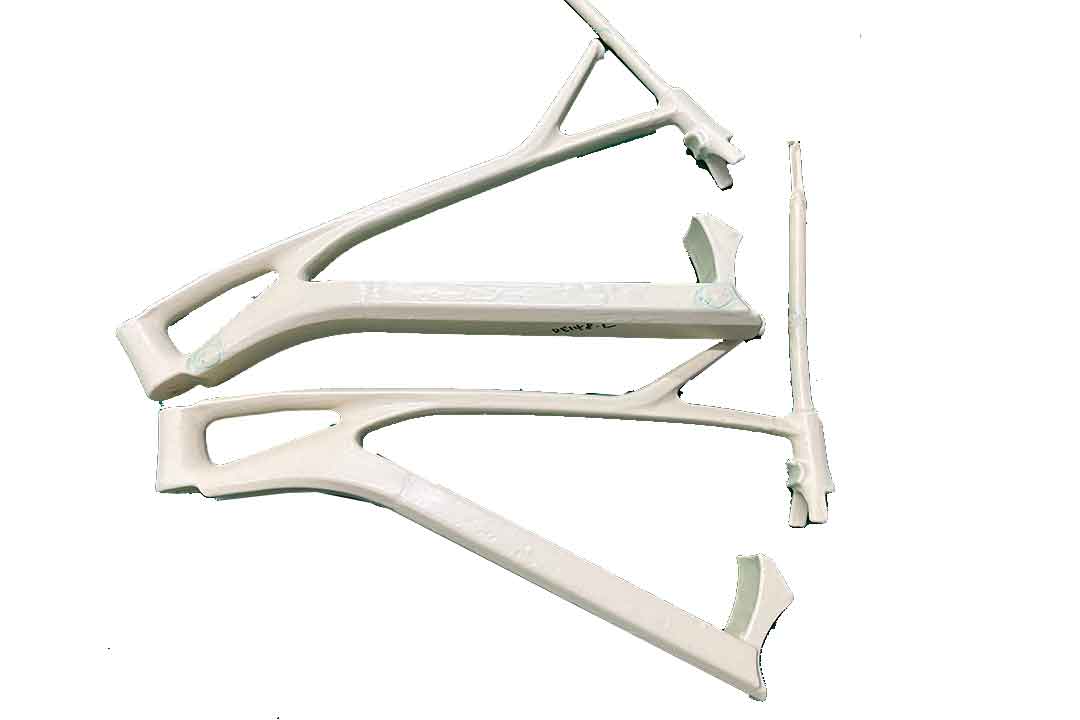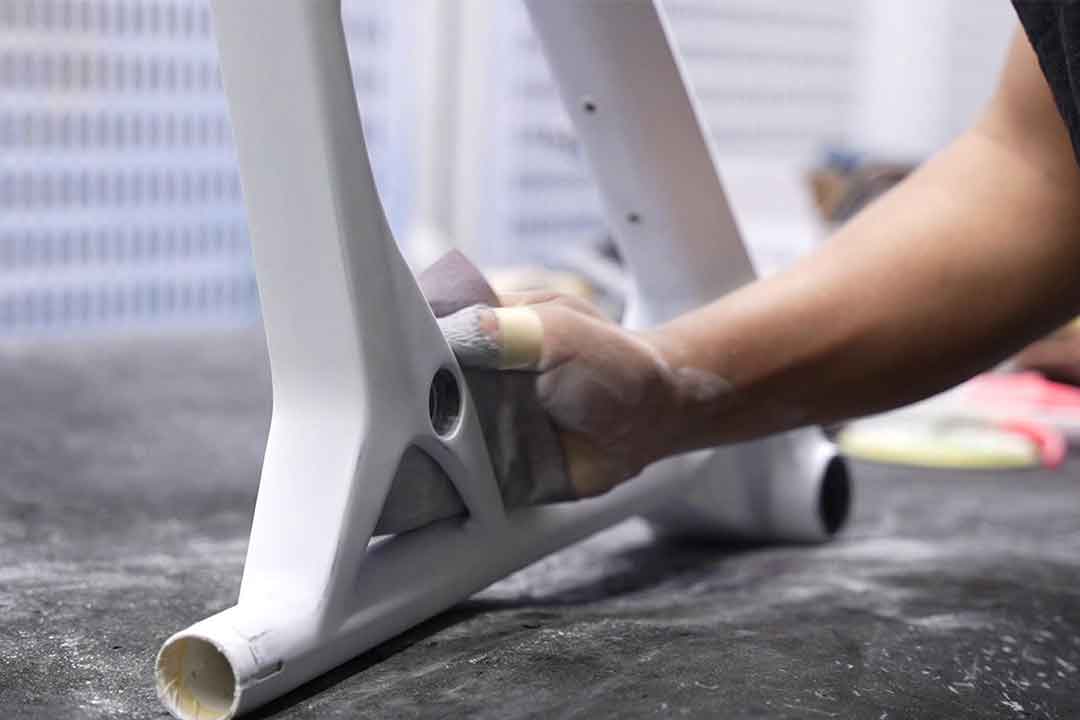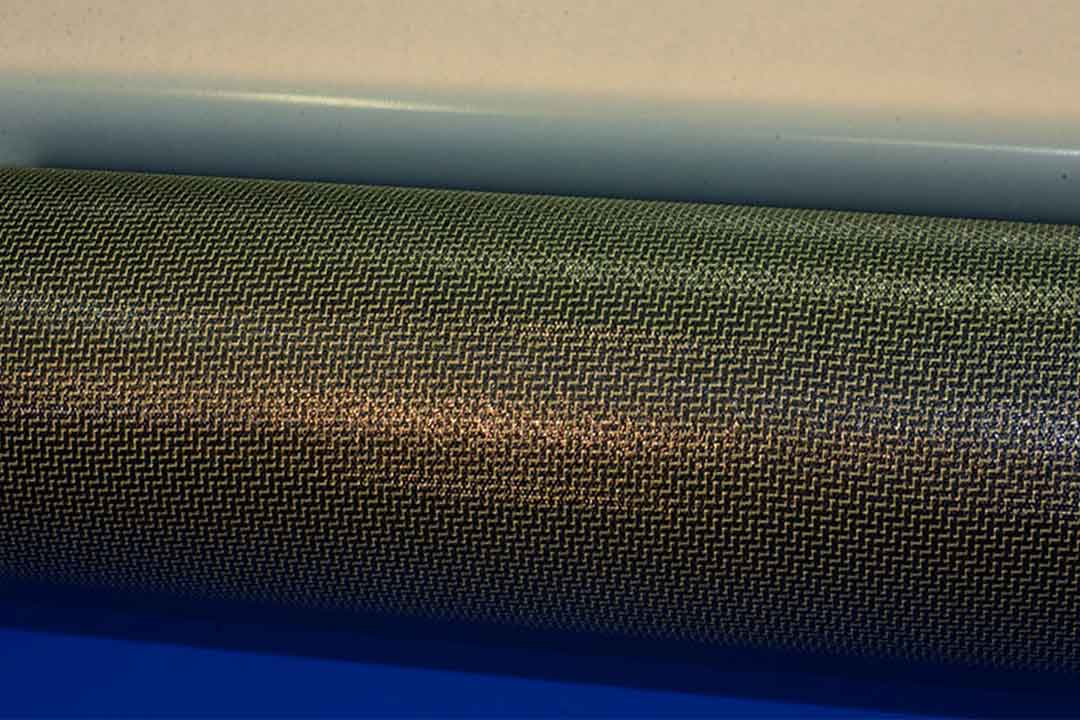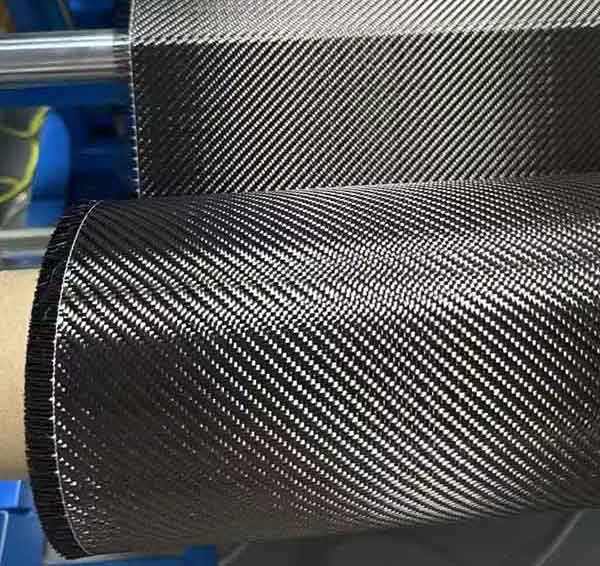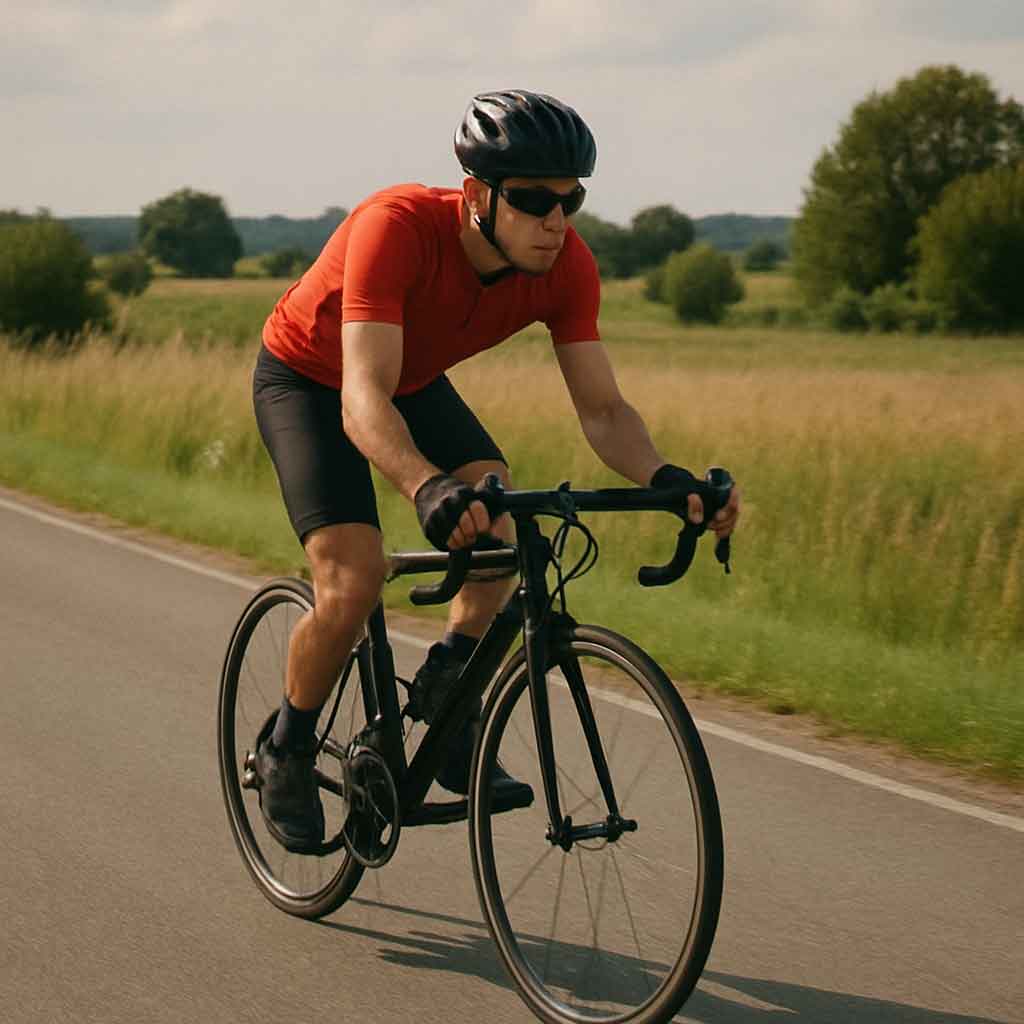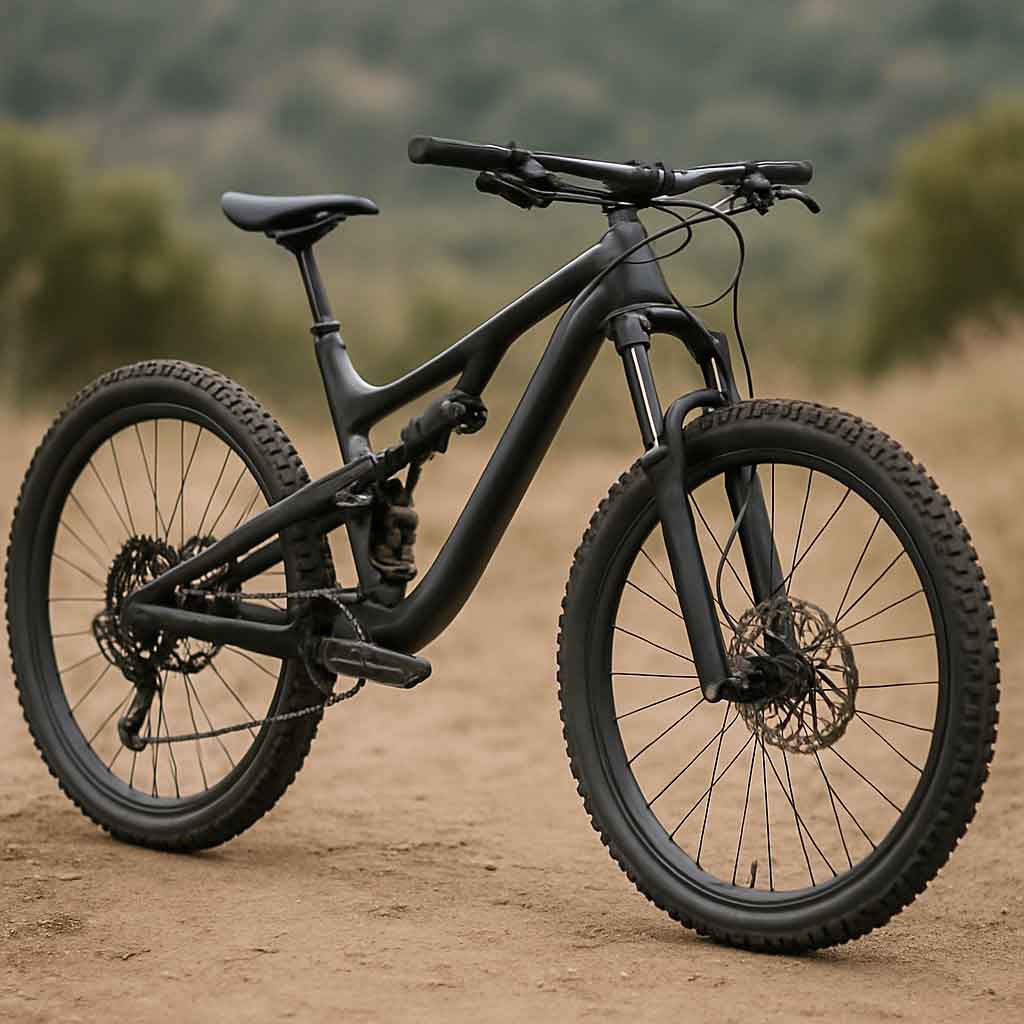Welcome to Mondince Bike - A well-known factory specialized in produce carbon bike frame and other parts since 2007.
Tips for Buying Used Gravel Bikes
Gravel biking has exploded in popularity over recent years, offering cycling enthusiasts the perfect blend of adventure and versatility. Whether you're planning a cross-country tour or just enjoy exploring local trails, a gravel bike can be your best companion. Buying a used gravel bike is a smart way to get into this exciting sport without breaking the bank. In this guide, we'll walk you through essential tips for finding the best deals and making a purchase you'll be thrilled with.
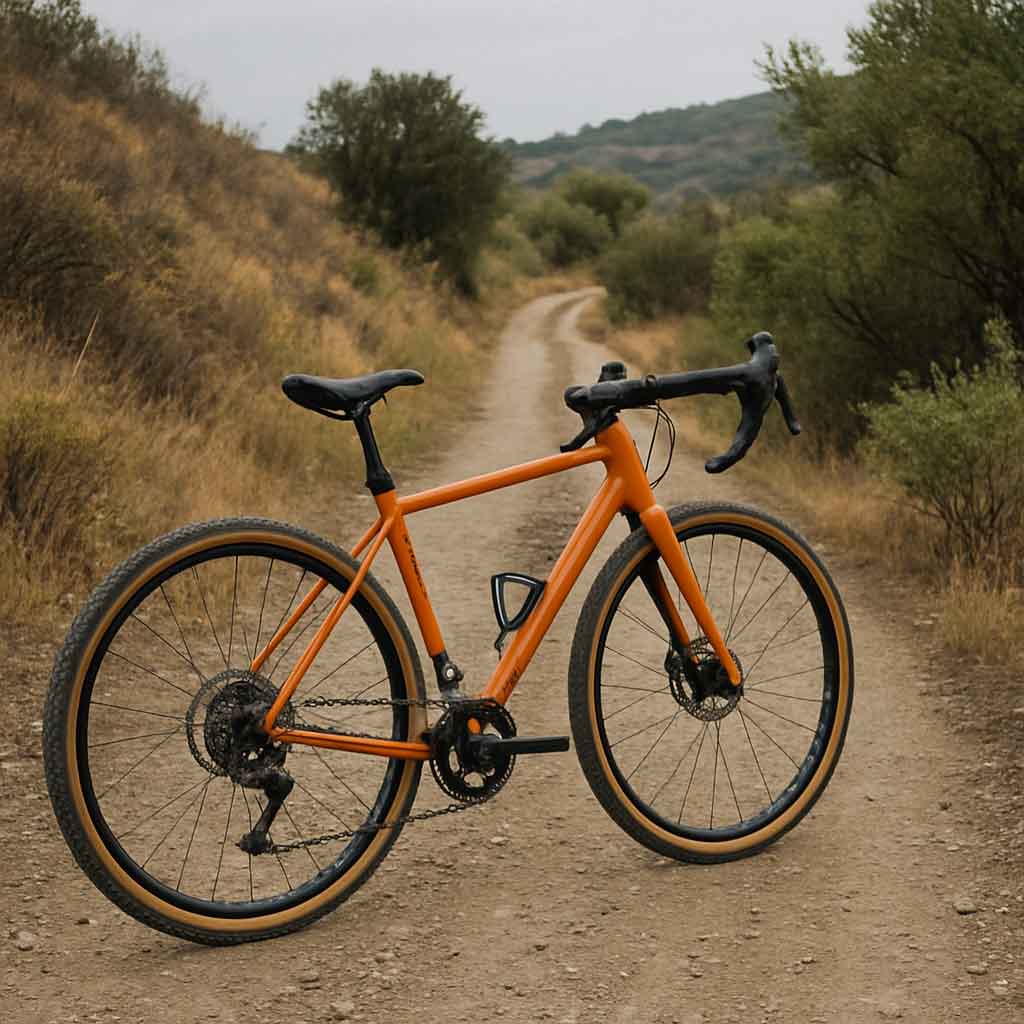
Versatility and Adaptability
Gravel bikes are designed for versatility. They handle a variety of terrains—from smooth pavement to rugged trails—making them an ideal choice for adventurers. This versatility allows you to seamlessly transition from road to trail without having to switch bikes, enhancing your cycling experience. Whether you're commuting to work or exploring remote paths, a gravel bike adapts to your needs, offering a unique blend of road and mountain biking features.
Comfort and Performance
With their comfortable geometry, wider tires, and durable construction, gravel bikes are perfect for long rides and off-road conditions. The relaxed frame geometry is designed to reduce fatigue, allowing riders to cover longer distances comfortably. Wider tires provide better traction and cushioning on uneven surfaces, ensuring a smoother ride even when the path gets rough. This combination of comfort and performance makes gravel bikes suitable for both beginners and seasoned cyclists looking for new adventures.
All-Weather Capability
Gravel bikes are built to withstand diverse weather conditions. Their robust frames and disc brakes ensure reliable performance in rain, mud, and even light snow. This all-weather capability means you can extend your cycling season, exploring new trails regardless of the forecast. The ability to ride year-round not only enhances your cycling experience but also maximizes the value of your investment in a gravel bike.
Setting Your Budget
Before you start shopping, it's crucial to set a clear budget. Gravel bikes under $1500 are widely available, and you can find great deals if you know where to look. Remember, buying used allows you to get a higher-quality bike for your money.
Understanding Price Ranges
For those new to gravel biking, there are plenty of options in the $500 to $1500 range. These bikes often come with aluminum frames, which offer a good balance of weight and durability. As you move up in price, you may find models with advanced features like carbon fiber frames and premium components. Understanding these price ranges helps you identify the best value for your budget.
Cost vs. Value
It's important to differentiate between cost and value when shopping for a gravel bike. A lower-priced bike might seem appealing, but if it requires significant upgrades or repairs, it might not offer the best value. Conversely, a slightly more expensive bike in excellent condition with high-quality components could provide better long-term satisfaction and performance. Evaluate each option based on its condition, features, and potential maintenance costs.
Financing Options
If your budget is tight, consider exploring financing options offered by some bike shops or online platforms. These can include payment plans or credit offers that allow you to spread the cost over several months. While it's essential to avoid overspending, responsible financing can help you afford a higher-quality bike without straining your finances.
Key Features to Consider
When evaluating a used gravel bike, consider these critical features:
Frame Material
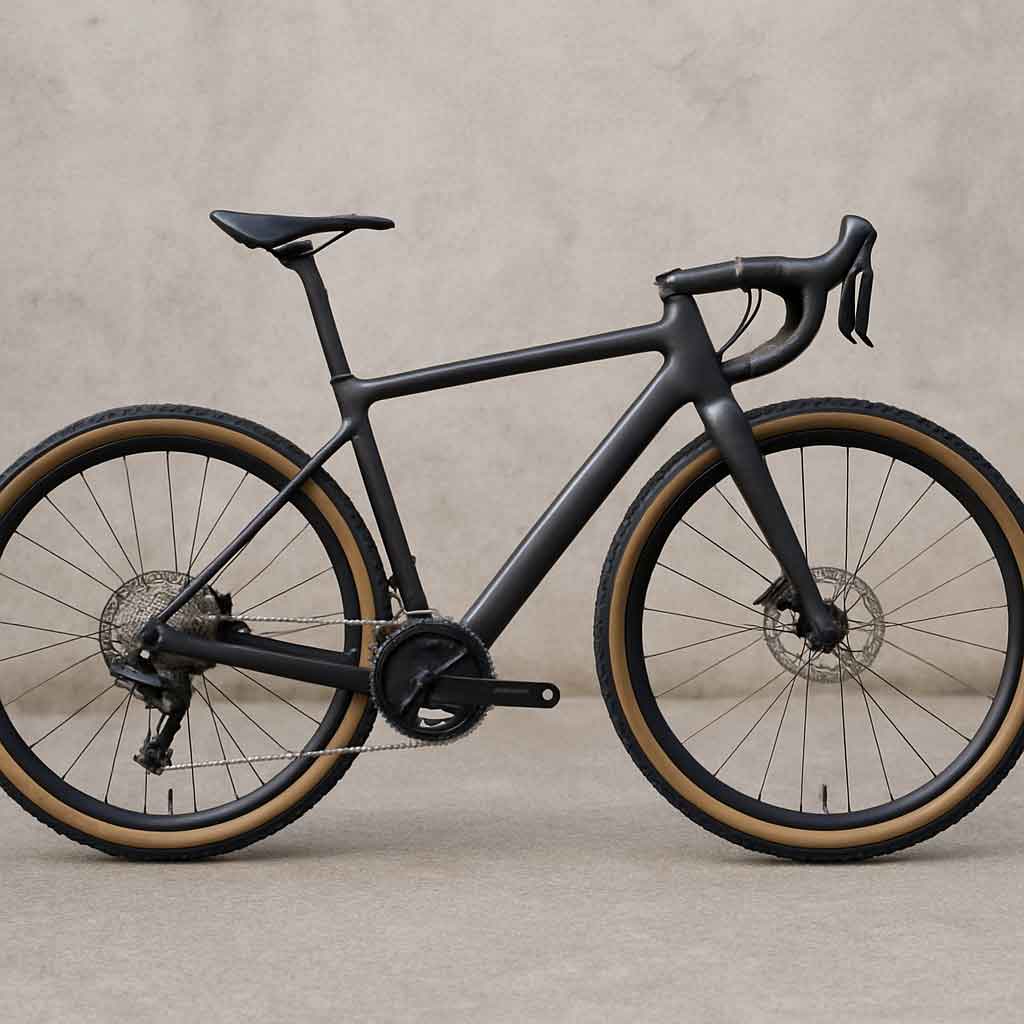
Gravel bikes are typically made from aluminum, steel, or carbon fiber. Aluminum is lightweight and affordable, making it a popular choice for budget-conscious buyers. Steel offers a smooth ride and is incredibly durable, while carbon fiber is the lightest and most performance-oriented option.
Aluminum Frames
Aluminum frames provide a great balance between weight and cost, making them ideal for entry-level riders. They are resistant to rust and generally require less maintenance, which is perfect for those who plan to ride in various conditions. However, aluminum can be less forgiving on rough terrains, so consider your typical riding surfaces when choosing this material.
Steel Frames
Steel frames are known for their durability and comfort. They absorb road vibrations effectively, providing a smoother ride over long distances. While heavier than aluminum and carbon, the robustness of steel makes it a reliable choice for touring and rugged trails. Riders who value a classic look and feel often prefer steel frames for their timeless appeal.
Carbon Fiber Frames
Carbon fiber frames are the lightest and offer the highest performance, favored by competitive cyclists and enthusiasts seeking top-tier performance. These frames are designed to optimize speed and agility, making them ideal for racing or challenging terrains. While more expensive, a used carbon fiber bike in good condition can offer substantial savings over a new model.
Tire Clearance
One of the defining features of a gravel bike is its ability to accommodate wider tires. Ensure the bike you're considering has enough clearance for at least 40mm tires, which is ideal for tackling various terrains.
Importance of Wider Tires
Wider tires provide better stability and traction, especially on loose or uneven surfaces. They also allow you to lower the tire pressure for a more comfortable ride, absorbing shocks and vibrations effectively. When assessing tire clearance, consider the types of trails and conditions you plan to ride, ensuring your bike can handle the necessary tire width.
Balancing Tire Width and Speed
While wider tires offer increased control and comfort, they can also impact speed and efficiency on smoother surfaces. If you plan to ride primarily on roads or smooth trails, you might opt for narrower tires for improved speed. Assess your typical riding conditions to find the right balance between tire width, speed, and comfort.
Future Upgrades
Consider future upgrades when evaluating tire clearance. As you become more experienced, you might want to experiment with different tire sizes or types. Having sufficient clearance allows you to make these upgrades without needing to replace the entire bike, offering more flexibility in the long run.
Gearing
Gravel bikes often come in 1x or 2x configurations. A 1x setup is simpler and lighter but may lack the range of gears needed for steep climbs. A 2x configuration offers a more comprehensive range, making it better for diverse terrains.
Understanding 1x Setups
A 1x drivetrain setup features a single chainring at the front, simplifying shifting and reducing weight. This setup is ideal for riders who prioritize simplicity and are comfortable with a limited gear range. It's particularly beneficial for those who ride on relatively flat or consistent terrains.
Advantages of 2x Setups
A 2x setup includes two chainrings, offering a wider range of gears that can tackle both steep climbs and fast descents. This versatility is perfect for riders who navigate varied terrains and require more options for efficient pedaling. While slightly heavier, the added flexibility can enhance your overall riding experience.
Customizing Your Gearing
Consider your typical riding style and terrain when choosing between 1x and 2x setups. If unsure, opt for a configuration that allows for easy customization or upgrading. This approach ensures your bike can adapt to your evolving needs and preferences, providing a personalized riding experience.
Brakes
Disc brakes are standard on most gravel bikes, providing reliable stopping power in all weather conditions. Ensure the bike you're considering has functioning disc brakes.
Types of Disc Brakes
There are two main types of disc brakes: mechanical and hydraulic. Mechanical disc brakes are easier to maintain and adjust, making them suitable for beginner cyclists. Hydraulic disc brakes offer more precise and powerful braking, ideal for more experienced riders seeking enhanced performance.
Evaluating Brake Performance
When inspecting a used gravel bike, test the brakes for responsiveness and smooth operation. Check for any squealing or grinding noises, which could indicate maintenance issues. Reliable brakes are crucial for safety, especially when riding on unpredictable terrains or in adverse weather conditions.
Brake Maintenance and Upgrades
Consider the long-term maintenance of the brakes when purchasing a used bike. While disc brakes are generally low-maintenance, they may require occasional adjustments or replacements. Ensure the bike's brake system is compatible with potential upgrades, allowing you to enhance performance as needed.
Inspecting the Bike
When buying a used bike, a thorough inspection is crucial. Here's what to check:
Frame and Fork
Examine the frame and fork for any cracks, dents, or significant scratches, which can be signs of damage. Pay special attention to the joints and welds for any irregularities.
Identifying Structural Damage
Carefully inspect the frame for any signs of structural damage, such as cracks or bends, which can compromise the bike's integrity. Use a flashlight to examine hard-to-see areas and check for any unusual sounds when tapping the frame. Structural issues can be costly to repair, so ensure the frame is in good condition before purchasing.
Importance of Fork Condition
The fork plays a vital role in the bike's handling and stability. Inspect the fork for any signs of damage or misalignment, as these issues can affect steering precision and safety. A well-maintained fork ensures smooth and confident handling, especially on rough or technical trails.
Cosmetic vs. Structural Issues
Differentiate between cosmetic and structural issues when evaluating a used bike. While scratches and paint chips may not affect performance, structural damage can pose safety risks. Use cosmetic imperfections as a negotiation point, but prioritize structural integrity for a safe and enjoyable ride.
Drivetrain and Components
Check the drivetrain for wear. Look at the chain, cassette, and chainrings for signs of excessive wear, which can indicate the bike has seen a lot of use. Inspect the shifters and derailleurs to ensure they work smoothly.
Assessing Drivetrain Wear
Examine the chain for rust or stiffness, indicating it may need replacement. Inspect the cassette and chainrings for worn or damaged teeth, which can cause shifting issues or reduced efficiency. A well-maintained drivetrain ensures smooth and reliable performance, enhancing your riding experience.
Evaluating Shifter and Derailleur Function
Test the shifters and derailleurs for smooth and accurate shifting across all gears. Listen for any unusual noises or resistance, which may suggest alignment or maintenance issues. Reliable shifting is crucial for tackling varied terrains, making it essential to ensure these components are in good working order.
Future Component Upgrades
Consider the potential for upgrading components when evaluating a used bike. A bike with compatible and upgradable components allows you to enhance performance as your skills and preferences evolve. Assess the condition and compatibility of existing components to determine the feasibility of future upgrades.
Wheels and Tires
Spin the wheels to ensure they are true and inspect the tires for any cuts or bald spots. Replacing wheels or tires can be costly, so factor this into your budget.
Ensuring Wheel Alignment
Check the wheels for trueness by spinning them and observing any wobbling or rubbing against the brake pads. Misaligned wheels can affect handling and efficiency, making it important to address any issues before purchase. Properly aligned wheels contribute to a smoother and more stable ride.
Evaluating Tire Condition
Inspect the tires for tread wear, cracks, or punctures, which can impact traction and safety. Consider the cost of replacing tires if they show significant wear or damage. Quality tires enhance your bike's performance and provide confidence on various terrains.
Importance of Hub and Spoke Condition
Examine the hubs for smooth rotation and listen for any grinding noises, which may indicate maintenance needs. Check the spokes for tension and alignment, as loose or damaged spokes can affect wheel strength and durability. A well-maintained wheelset ensures reliable performance and longevity.
Where to Find the Best Gravel Bike Deals
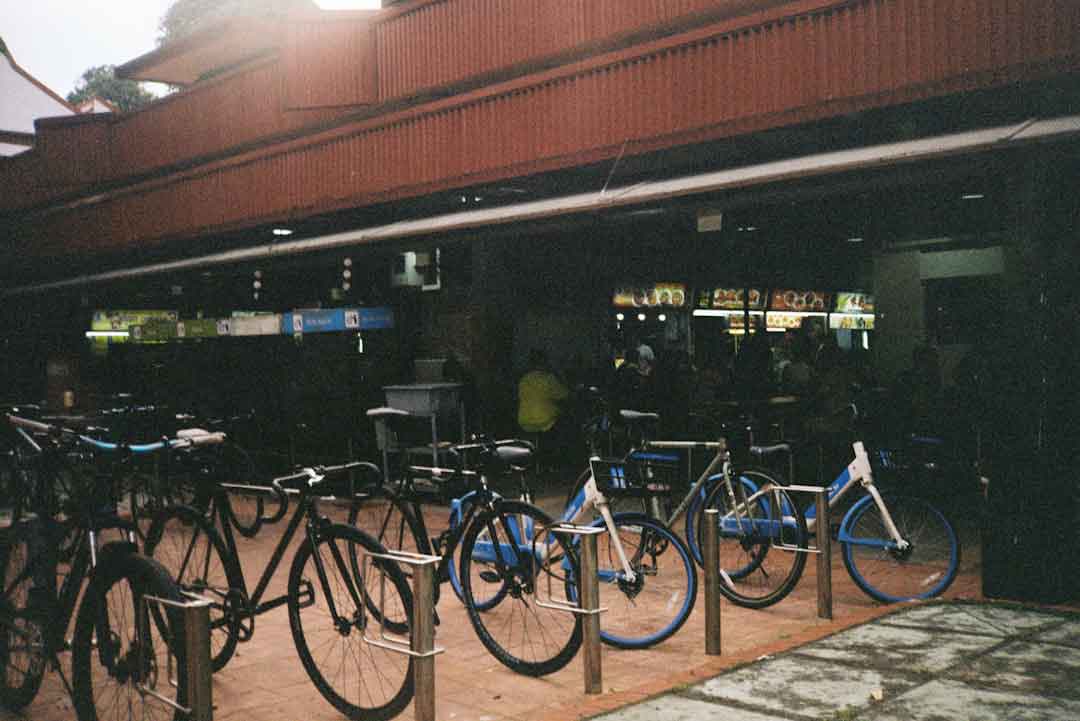
by Mia M (https://unsplash.com/@filmiyagi)
Online platforms like eBay, Craigslist, and Facebook Marketplace are great places to find used gravel bikes. Additionally, check local bike shops for trade-ins and community boards for garage sales. Websites dedicated to cycling, like BikeExchange and Pinkbike, also offer a range of options.
Online Marketplaces
Online platforms provide a vast selection of used gravel bikes, often at competitive prices. eBay, Craigslist, and Facebook Marketplace allow you to browse listings and filter results based on location, price, and bike specifications. These platforms offer the convenience of shopping from home and the ability to negotiate directly with sellers.
Navigating Listings
When browsing online marketplaces, pay attention to detailed descriptions and clear photos that showcase the bike's condition. Look for listings from reputable sellers with positive reviews or ratings, and don't hesitate to ask for additional information or images if needed. A thorough understanding of the listing helps you make informed decisions.
Online Forums and Communities
Join online cycling forums and communities to connect with fellow enthusiasts and gain insights into buying used gravel bikes. These platforms often have classified sections where members sell bikes and components. Engaging with the community can provide valuable advice and recommendations for finding the best deals.
Local Bike Shops and Events
Local bike shops often have trade-in programs or used bike sales, providing a reliable source for purchasing pre-owned gravel bikes. These shops may offer warranties or maintenance services, adding value to your purchase. Additionally, attend local cycling events or garage sales, where you might find great deals from fellow cyclists.
Building Relationships with Shops
Developing a relationship with your local bike shop can lead to insider knowledge about upcoming sales or trade-in opportunities. Shop staff can offer expert advice on choosing the right bike and may even notify you of new arrivals that meet your criteria. Establishing a rapport with your local shop enhances your buying experience and provides ongoing support.
Community Boards and Classifieds
Check community boards, both physical and online, for listings of used gravel bikes. Libraries, cafes, and community centers often have bulletin boards where locals post items for sale. These listings might offer unique finds at lower prices, especially if the seller is motivated to sell quickly.
Best Gravel Bike Websites
For those interested in specific brands or models, visiting manufacturer websites or forums can provide insights into where to find deals. Websites like REI and Competitive Cyclist often have sales on last year's models, which can be a great way to find a new bike at a used price.
Manufacturer Websites
Visit manufacturer websites to explore their lineup of gravel bikes and any promotional offers. Many brands offer discounts on previous models or refurbished bikes, providing high-quality options at reduced prices. Signing up for newsletters or alerts can keep you informed about upcoming sales or new releases.
Specialized Cycling Websites
Websites dedicated to cycling, such as BikeExchange and Pinkbike, offer a curated selection of new and used gravel bikes. These sites often have filters for brand, price, and location, making it easier to find specific models. The focus on cycling ensures listings from knowledgeable sellers, enhancing your confidence in the purchase.
Seasonal Sales and Discounts
Keep an eye out for seasonal sales and discounts on cycling websites. Retailers often offer significant markdowns on last year's models or during end-of-season sales. These promotions provide an opportunity to purchase a high-quality bike at a fraction of the original cost.
Understanding Sizing
Getting the right size is crucial for comfort and performance. Gravel bikes come in various sizes, typically measured in centimeters. A 52 cm gravel bike might be suitable for someone around 5'6" to 5'9", but it's always best to consult a sizing chart or visit a local bike shop to try different sizes.
Importance of Proper Fit
A properly sized bike enhances comfort, efficiency, and control, reducing the risk of fatigue and injury. The right fit allows you to maintain a natural riding posture, optimizing power transfer and minimizing strain on your muscles and joints. Prioritize sizing during your search to ensure a comfortable and enjoyable ride.
Using Sizing Charts
Manufacturers provide sizing charts that match bike sizes with rider height and inseam measurements. Use these charts as a starting point to determine the appropriate size range for your body dimensions. While helpful, these charts should be complemented by a test ride or professional fitting to account for individual preferences and proportions.
Professional Bike Fitting
Consider investing in a professional bike fitting to ensure optimal sizing and adjustments. A bike fitting specialist can assess your posture, flexibility, and riding style, making precise adjustments to the bike's components. This personalized approach maximizes comfort and performance, particularly for long rides or challenging terrains.
Finalizing Your Purchase
Once you've found a bike that meets your criteria, it's time to negotiate the price. Don't be afraid to make an offer below the asking price, especially if you've found any issues during your inspection.
Test Ride
Always test ride the bike before purchasing. This will give you a feel for its handling and ensure everything is in working order. Pay attention to how the bike shifts, brakes, and handles over different surfaces.
Evaluating Ride Quality
During the test ride, assess the bike's overall comfort, responsiveness, and stability. Pay attention to how the bike handles turns, climbs, and descents, ensuring it meets your performance expectations. A positive test ride experience confirms that the bike is a good fit for your riding style and preferences.
Checking Component Functionality
Use the test ride to evaluate the functionality of key components, such as the drivetrain, brakes, and suspension (if applicable). Test the bike in various gear combinations and braking scenarios to identify any issues or areas needing adjustment. Confirming component performance ensures a reliable and enjoyable ride.
Adjusting the Fit
Take the opportunity to make minor adjustments to the bike's fit during the test ride. Adjust the saddle height, handlebar position, and reach to find your optimal riding position. These adjustments can provide a more accurate assessment of the bike's comfort and suitability.
Closing the Deal
If everything checks out, it's time to close the deal. Ensure you receive all necessary documentation, such as the original purchase receipt and any maintenance records. This information can be invaluable for future repairs or resale.
Negotiating the Price
Use your inspection findings and market research to negotiate a fair price with the seller. Highlight any issues or necessary repairs as leverage for reducing the asking price. A respectful and informed negotiation can lead to a mutually beneficial agreement.
Securing Documentation
Request all relevant documentation, including the original purchase receipt, maintenance records, and any warranties or guarantees. This paperwork provides a history of the bike's condition and can assist with future maintenance or resale. Having comprehensive documentation enhances the bike's value and your peace of mind.
Understanding Post-Purchase Support
Inquire about any post-purchase support or services offered by the seller or shop. Some sellers may offer a short warranty or free initial maintenance check, providing added value to your purchase. Understanding available support options ensures a smooth transition to ownership.
Conclusion
Buying a used gravel bike can be a rewarding experience, offering you the chance to explore new paths and enjoy the great outdoors. By following these tips, you'll be well-equipped to find a bike that fits your needs and budget. Happy riding!
Embracing the Adventure
Owning a gravel bike opens up a world of adventure and exploration, allowing you to discover new trails and push your cycling boundaries. Embrace the versatility and freedom that a gravel bike provides, and enjoy the sense of accomplishment that comes with each ride.
Building Your Cycling Community
Engage with the gravel biking community to share experiences, tips, and routes. Joining local clubs or online forums connects you with like-minded enthusiasts who can enhance your journey. Building a community adds a social aspect to your cycling adventures, fostering friendships and shared experiences.
Continuous Learning and Improvement
As you gain experience with your gravel bike, continue to learn and improve your skills. Experiment with different terrains, techniques, and gear to enhance your riding capabilities. The journey of gravel biking offers endless opportunities for growth and discovery, keeping your passion for cycling alive.



